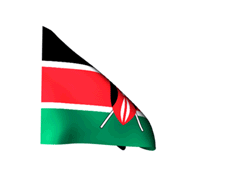THE CONCEPT OF PERSONAL INSOLVENCY IN INDIA

In the past, the Indian Parliament passed the Insolvency and Bankruptcy Code , 2016 (IBC). The Government had notified only the part on corporate insolvency. But as we moved further in time to 2019, the Government realised that if they did not notify those provisions that dealt with Personal Insolvency, guarantors of big corporates would go virtually scot free. Hence, in 2019 Personal Insolvency provisions were notified.
Personal Insolvency, if defined in simple words, would mean when a person is unable to honour a debt agreement i.e. when his debts exceed his income. As of now, Personal Insolvency is still at its initial stage in India and it requires time to be fully operational. In the latest amendment of 2019 in IBC, a Personal Guarantor is allowed to be sued for recovery of dues by creditors in the NCLT. A Personal Guarantor can now also move a petition for having himself declared insolvent. As per this amendment, the law seeks that both secured and unsecured debt of the guarantor would be covered under the head Personal Insolvency.
In terms of the amendments in Personal Insolvency, the IBC now provides process for dealing with default. The “Fresh Start Process” provides for post clearance of dues with creditors. The “Insolvency Resolution Process” provides for a mechanism for creditors and debtors to renegotiate a repayment plan and “Bankruptcy” provides for liquidation of debtor’s assets but this can only be set into motion when resolution process fails. Earlier the Law had designated “Debt Recovery Tribunals“ (DRT) as the adjudicating body having the wider presence than the “National Company law Tribunal” (NCLT) which earlier, only adjudicated for Corporate Insolvency but the 2019 Amendment in IBC, has designated NCLT as the adjudicating body granting relief to both creditors and personal guarantors for fast and easy disposal.
In the month of December, 2019, the first Insolvency Petition was filed, in Hyderabad NCLT’s Amaravti Bench. A Personal Guarantor by the name of Mr. Omkaram Venkata Ramana, who had named himself as the personal guarantor for five firms with a total default of more than Rs. 38 crores of bank loans filed a petition to initiate Personal Insolvency Resolution Process. Bank of India, the sole banker to the five companies, had earlier attempted auctioning the personal assets of the promoter offered as guarantee, but could not succeed. Latest amendment in IBC, has enabled creditors as well as personal guarantors to approach the Tribunal seeking to initiate proceedings against personal guarantors. Earlier lenders were moving to Debt Recovery Tribunals against the personal guarantors now the they can approach NCLT against personal debtors in order to settle claims in a time bound period.
In the words of Mr. Injeti Srinivas, Corporate Affairs Secretary, “Personal Insolvency regime is expected to be fully operational within a period of one year and a non-adjudicatory process is being worked out for entities having very small exposures“. Corporate Affairs Ministry is keen to develop a market place for stressed assets in order to achieve maximum participation and value of such assets. There are several challenges in the process of introduction of the Personal Insolvency Regime, as it is a very large subject because it will bring in every type of borrower in its ambit. The Corporate Ministry’s vision is to push the non-adjudication process that would be an online verification based system where the borrower’s assets and financial status could be ascertained and accordingly insolvency could be determined and relief could be granted. It further aims to include cross-border insolvency and group insolvency in the agenda.
Though Personal Insolvency is at it’s very initial stage it brings hope for a number of lenders, who are stuck with insolvent companies and are backed by personal guarantors. As personal guarantors were not answerable to the NCLT before the 2019 amendment companies were taking advantage of the situation and were happy to be prosecuted under DRT as there is no time restrain.
Personal Insolvency was first introduced in Ireland in 2012. Personal Insolvency or Personal Insolvency Arrangement (PIA) that was first codified in Ireland under their Personal Insolvency Act, 2012. The act seems to have achieved its purpose as in the year 2019 alone, 1334 protective certificates were filed by the Personal Insolvency Practitioner (PIP) out of which 1197 arrangementswere sent for approval from creditors and a total number of 978 arrangements (Debt Relief Notice (DRN), Debt Settlement Arrangements (DSA) and Personal Insolvency Arrangements (PIA) ) were approved by the creditors. It is much hoped that India will also benefit by personal insolvency of guarantors.
Rishabh Mahipal
Associate
The Indian Lawyer




































Leave a Reply